Related Research Articles

The Himba are an indigenous people with an estimated population of about 50,000 people living in northern Namibia, in the Kunene Region and on the other side of the Kunene River in southern Angola. There are also a few groups left of the OvaTwa, who are also OvaHimba, but are hunter-gatherers. Culturally distinguishable from the Herero people, the OvaHimba are a semi-nomadic, pastoralist people and speak OtjiHimba, a variety of Herero, which belongs to the Bantu family within Niger–Congo. The OvaHimba are semi-nomadic as they have base homesteads where crops are cultivated, but may have to move within the year depending on rainfall and where there is access to water.

Kunene is one of the fourteen regions of Namibia. Its capital is Opuwo, its governor is Marius Sheya. The region's name comes from the Kunene River which forms the northern border with Angola. Besides the capital Opuwo, the region contains the municipality of Outjo, the town Khorixas and the self-governed village Kamanjab. Kunene is home to the Himba people, a subtribe of the Herero. As of 2020, Kunene had 58,548 registered voters.

The Cunene or Kunene is a river in Southern Africa. It flows from the Angola highlands south to the border with Namibia. It then flows west along the border until it reaches the Atlantic Ocean. It is one of the few perennial rivers in the region. It is about 1,050 kilometres (652 mi) long, with a drainage basin 106,560 square kilometres (41,143 sq mi) in area. Its mean annual discharge is 174 m3/s at its mouth. The Epupa Falls lie on the river. Olushandja Dam dams a tributary of the river, the Etaka, and helps provide the Ruacana Power Station with water.
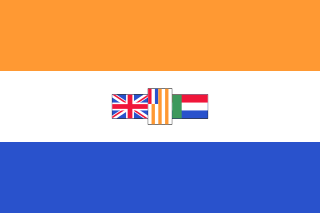
Kaokoland was an administrative unit and a bantustan in northern South West Africa. Established during the apartheid era, it was intended to be a self-governing homeland of the OvaHimba, but an actual government was never established. Like other homelands in South West Africa, the Kaokoland bantustan was abolished in May 1989, at the beginning of the transition of Namibia towards independence. "Kaokoland" remains as an informal name for the geographic area, while the political unit of administration since 1990 is Kunene Region. The area is in the Kaokoveld ecoregion.
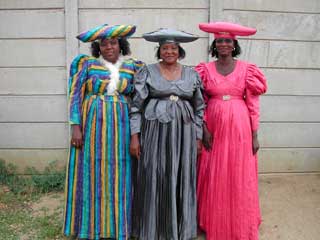
The Herero are a Bantu ethnic group inhabiting parts of Southern Africa. There were an estimated 250,000 Herero people in Namibia in 2013. They speak Otjiherero, a Bantu language. Though the Herero primarily reside in Namibia, there are also significant populations in Botswana and Angola. In Botswana, the Hereros or Ovaherero are mostly found in Maun and some villages surrounding Maun. These villages among others are Sepopa, Toromuja, Karee and Etsha. Some of them are at Mahalapye. In the South eastern part of Botswana they are at Pilane. There are also a few of them in the Kgalagadi South, that is Tsabong, Omawaneni, Draaihoek and Makopong Villages.

Herero is a Bantu language spoken by the Herero and Mbanderu peoples in Namibia and Botswana, as well as by small communities of people in southwestern Angola. There were 211,700 speakers in 2014.
Luhya is a Bantu language of western Kenya.
Ndonga, also called Oshindonga, is a Bantu dialect spoken in Namibia and parts of Angola. It is a standardized dialect of the Ovambo language, and is mutually intelligible with Kwanyama, the other Ovambo dialect with a standard written form. With 810,000 speakers, the language has the largest number of speakers in Namibia.

The Ovambo language is a dialect cluster spoken by the Ovambo people in southern Angola and northern Namibia, of which the written standards are Kwanyama and Ndonga.
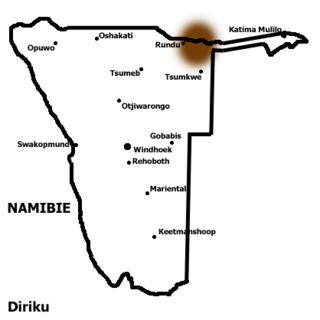
Gciriku or Dciriku, is a Bantu language spoken by 305,000 people along the Okavango River in Namibia, Botswana and Angola. 24,000 people speak Gciriku in Angola, according to Ethnologue. It was first known in the west via the Vagciriku, who had migrated from the main Vamanyo area and spoke Rugciriku, a dialect of Rumanyo. The name Gciriku remains common in the literature, but within Namibia the name Rumanyo has been revived. The Mbogedu dialect is extinct; Maho (2009) lists it as a distinct language, and notes that the names 'Manyo' and 'Rumanyo' are inappropriate for it.
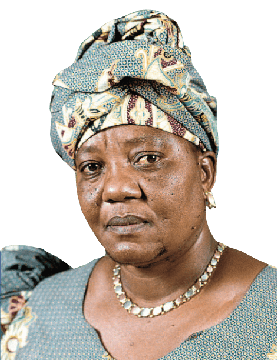
Angelika Kazetjindire Muharukua was a Namibian politician. An ethnic Herero from northwestern Namibia, Muharukua joined the South West Africa People's Organization (SWAPO) in 1979. She was a surprise choice by President Sam Nujoma for the 2nd National Assembly of Namibia in 1995 and remained in the National Assembly since. In May 2004, she was chosen to replace Marlene Mungunda as deputy minister of Women Affairs and Child Welfare, later renamed the Ministry of Gender Equality and Child Welfare.
The Zigula or Zigua language, Chizigua, is a Bantu language of Tanzania and Somalia, where the Mushunguli dialect is spoken.
Mijikenda is a Bantu dialect cluster spoken along the coast of East Africa, mostly in Kenya, where there are 1.9 million speakers but also in Tanzania, where there are 100,000 speakers. The name Mijikenda means "the nine settlements" or "the nine communities" and refers to the multiple language communities that make up the group. An older, derogatory term for the group is Nyika which refers to the "dry and bushy country" along the coast.
The Kavango – Southwest Bantu languages are a group of Bantu languages established by Anita Pfouts (2003). The Southwest Bantu languages constitute most of Guthrie's Zone R. The languages, or clusters, along with their Guthrie identifications, are:
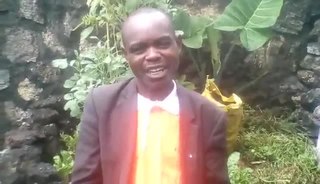
Lega is a Bantu language, or dialect cluster, of the Democratic Republic of the Congo. There are two major varieties, Shabunda Lega and Mwenga Lega; Mwenga Lega, with about 10% of speakers, finds Shabunda difficult to understand. Kanu has been assigned a separate ISO code but is a dialect of Shabunda, and no more divergent than other dialects.
Bala (Lobala) is a Bantu language of the Democratic Republic of the Congo. According to Maho (2009), it includes Boko (Iboko).
Hakaona is a Bantu language of Angola and Namibia. Until perhaps Anita Pfouts (2003), it was considered a dialect of Herero.
Kuvale is a Southern Bantu language spoken in Angola, in the middle of a large Umbundu-speaking area. It has traditionally been considered a dialect of Herero; however, Maho (2009) has moved it from Bantu Zone R.30 to Zone R.10, which includes Umbundu and a few smaller languages. Ngendelengo may be a distinct language.
The Zemba are an indigenous people, residing in Angola and in Namibia.
Ikizu is a Bantu language spoken by the Ikizu peoples of Tanzania. Dialects are Ikizu proper and Sizaki. Maho (2009) treats Sizaki (Shashi) as a separate language. However, Ethnologue 16 retired the ISO code for Sizaki, merging it into Ikizu.
References
- ↑ Zemba at Ethnologue (18th ed., 2015) (subscription required)
- 1 2 Jouni Filip Maho, 2009. New Updated Guthrie List Online
- ↑ Zemba language at Ethnologue (16th ed., 2009)
- ↑ Zemba at Ethnologue (16th ed., 2009)